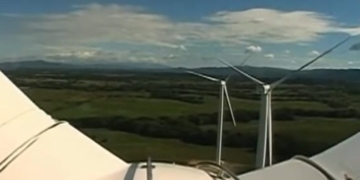China, India and dozens of other countries still depend heavily on coal to generate electricity, power their economies and ensure people decent living standards.
That this is true in the developing world is news to no one. But even in Europe the tide is turning.
Take Germany, for instance, which has been reactivating its lignite-fired power plants to help it through the winters in recent years.
In the Netherlands, angry citizens elected a new government that has ended mandates for heat pumps, subsidies for electric vehicles and edicts forcing farmers to kill off livestock and shut down farms. So, the now-ousted politicians claim they were “leading efforts” to avert a “climate crisis.”
The Dutch climate revolt is reverberating across Europe.
However, President Joe Biden remains determined to impose still more climate and energy rules that will cost trillions of dollars — even though polls consistently show Americans are not willing to pay even $10 per month more on their electric bills to combat climate change.
Why, then, do some Republicans choose to hype climate alarm and pursue a green energy fantasy?
Republican Gov. Doug Burgum wants North Dakota to sequester carbon dioxide from petroleum operations and take other steps to become carbon-neutral by the end of 2030. A self-described young conservative wants the Republican Party to “lead the fight against climate change.” Republican Gov. Glenn Youngkin of Virginia still supports a huge 176-turbine wind project off his state’s Atlantic coast.
This is pathetic for a party that boasts that it is pro-economic growth. Worse, vital facts get left by the wayside.
Energy analysts have known for a long time that the cost of replacing coal and natural-gas generators with wind and solar installations will likely add hundreds of dollars to monthly electric bills —and cause enormous U.S. and global wildlife, environmental, human health and other problems.
Wind and sunshine are available at levels needed to generate electricity only 7-10 hours per day, on average, at totally unpredictable times. On the hottest and coldest days, there’s often no wind.
Wintertime sunshine in northern latitudes is too weak to generate much electricity. America’s electricity needs are steadily increasing, and green energy will more likely lead to rationing than abundance.
Coal, gas and nuclear power plants can be built close to cities, factories and data centers, with short transmission lines to ensure nearly 24/7 electricity. They provide reliable, affordable electricity for 40 years or more.
Wind and solar installations must generally be far away from energy consumers, requiring hundreds of miles of new transmission lines. They last 15-25 years, at most.
Because they are weather-dependent and intermittent, they must be backed up by coal, gas, nuclear or hydroelectric for windless, sunless periods.
Reliability of U.S. wind turbine electricity generation in 2023 was one-third of its rated capacity. If a turbine’s nameplate capacity was 12 megawatts, it generated only 4 MW. If a big wind installation was to provide enough power for 150,000 homes, it generated only enough for 50,000. If communities needed electricity 8,760 hours per year, they got it only 2,920 hours–in spurts, at totally random, unpredictable times. If they didn’t have sufficient backup generation, they got blackouts.
Sufficient backup without fossil fuels or reliable energy might work, but would require massive battery storage. This is not economical. Batteries for backup electricity storage nationwide and balancing an increasingly complicated and fragile U.S. grid would likely cost up to $290-trillion, depending on which hourly electricity-generation data and other estimates are used.
Going to a completely wind-solar-battery economy also requires upgraded national, local, neighborhood and household electric lines, transformers and other systems. More trillions of dollars.
Extracting and processing raw materials to build all this equipment will require thousands of new mines in America and throughout the world. Just meeting today’s EV and other copper needs–without adding the total green energy transition–means the world would have to mine 115% more copper by 2050 than in all of human history up to 2018.
Add in all the other raw materials, and the mining requirements become astronomical — a dozen times more materials than if we’d just build more gas and nuclear plants.
Families, factories, hospitals, schools, businesses and communities cannot afford the skyrocketing electricity prices the green energy transition would impose. America cannot afford the land and wildlife impacts. Our planet cannot afford the mostly overseas human rights violations, fossil fuel requirements, or land, air and water pollution from all the mining, processing and manufacturing.
Legislators — especially Republicans — must resist the trend to be politically-correct on the climate issue. Instead, they must lead the way in analyzing these mind-boggling costs, explaining them to voters and bring sanity to the fearmongering used to justify the rush to wind and solar alternatives that are anything but clean and green.
Craig Rucker is president of the Committee For A Constructive Tomorrow (www.CFACT.org).
The views and opinions expressed in this commentary are those of the author and do not reflect the official position of the Daily Caller News Foundation.
(Featured Image Media Credit: Screen Capture/Voice of America)
All content created by the Daily Caller News Foundation, an independent and nonpartisan newswire service, is available without charge to any legitimate news publisher that can provide a large audience. All republished articles must include our logo, our reporter’s byline and their DCNF affiliation. For any questions about our guidelines or partnering with us, please contact [email protected].


























